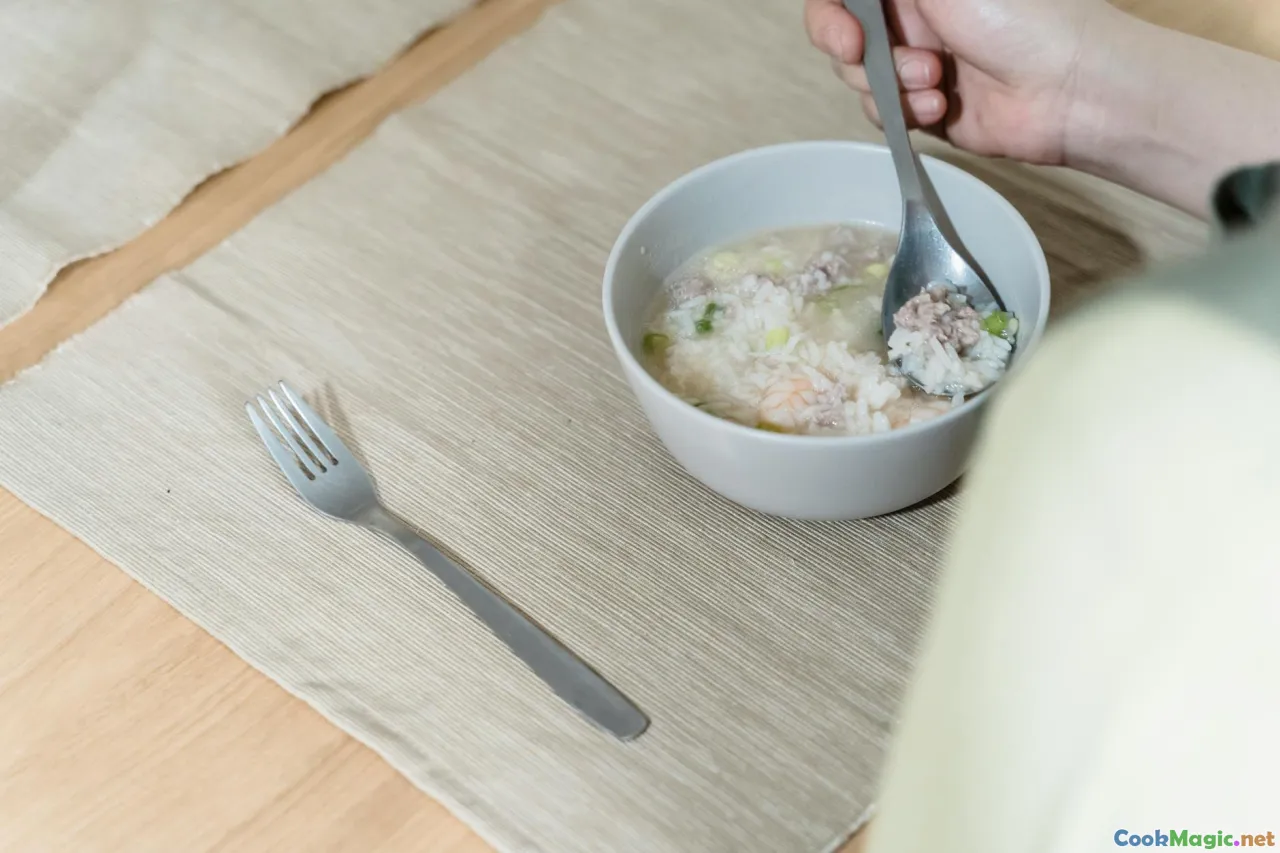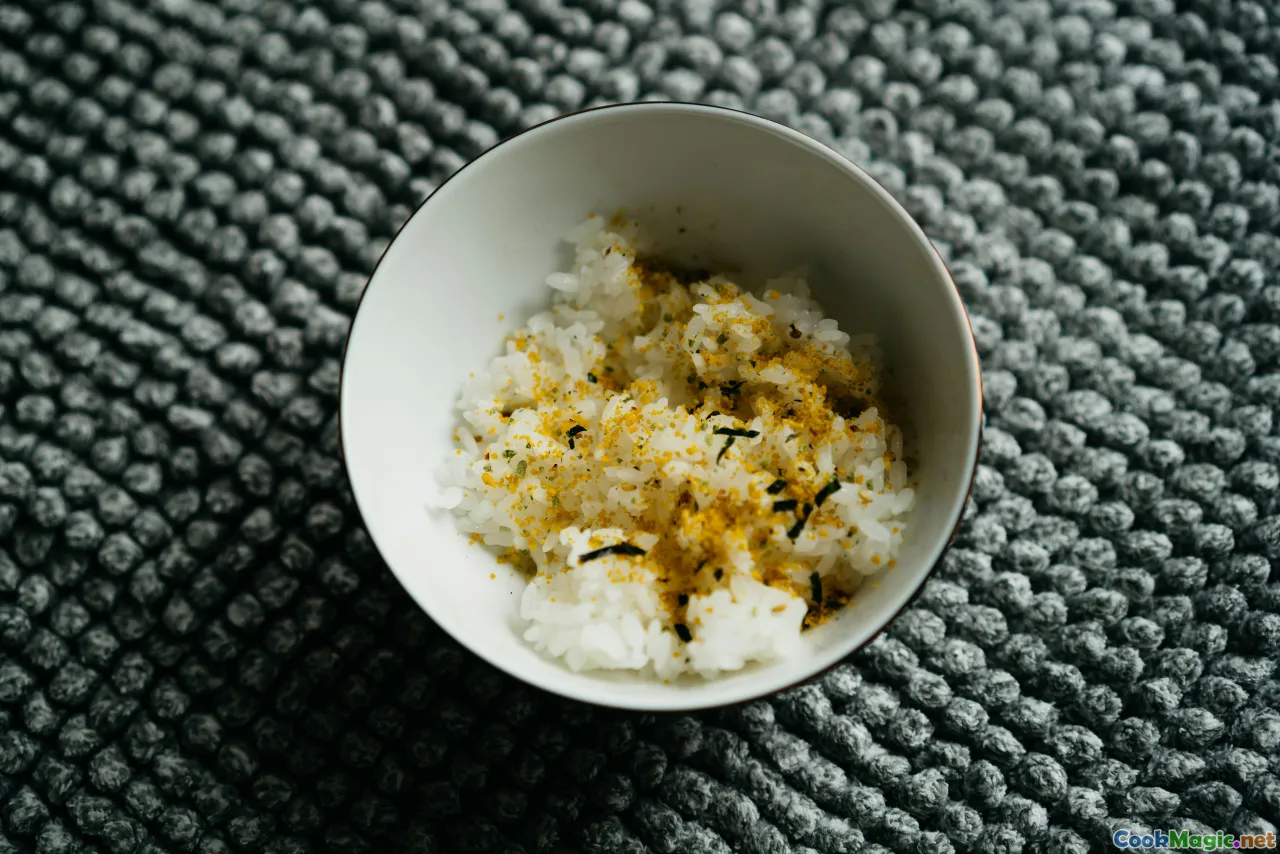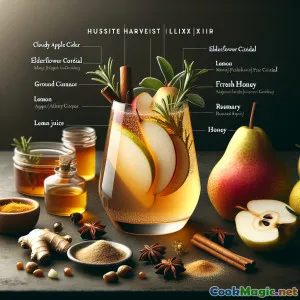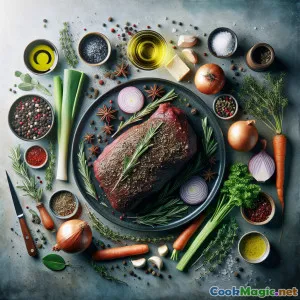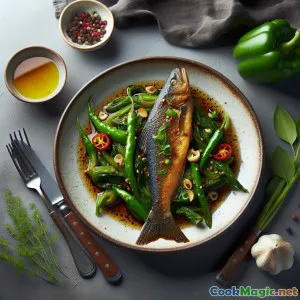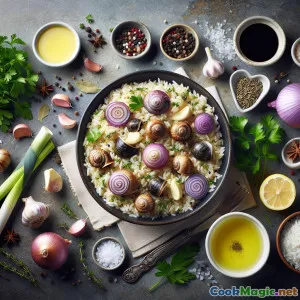
크리미한 영국식 쌀죽과 강물 달팽이
(Creamy English Rice Porridge with River Snails)
(0 리뷰)재료
-
120 grams 단립 쌀
(물가 맑아질 때까지 헹군 후 Arborio로 대체할 수 있습니다.)
-
300 grams 생물 강장딱지
(문지르며 씻고 손질했습니다; 가능한 한 신선하게.)
-
2 small 샬롯
(곱게 다진 것.)
-
2 cloves 마늘 쪽
(곱게 다진 것.)
-
1 medium 대파 (흰 부분만)
(반으로 자르고 얇게 썬다.)
-
1 large 월계수 잎
(신선하거나 건조한)
-
1 liter 생선 또는 닭 육수
(저나트륨이 선호됩니다.)
-
100 ml 전유
(크림 같은 식감을 더합니다.)
-
15 grams 무염 버터
(향기로운 재료를 볶기 위한 용도.)
-
2 sprigs 신선한 타임
(장식용 추가분.)
-
2 tbsp 평잎 파슬리
(잘게 다진.)
바다 소금, to taste
흑후추, to taste
-
1/2 tsp 레몬 제스트
(마무리를 위한 곱게 간 것.)
(물가 맑아질 때까지 헹군 후 Arborio로 대체할 수 있습니다.)
(문지르며 씻고 손질했습니다; 가능한 한 신선하게.)
(곱게 다진 것.)
(곱게 다진 것.)
(반으로 자르고 얇게 썬다.)
(신선하거나 건조한)
(저나트륨이 선호됩니다.)
(크림 같은 식감을 더합니다.)
(향기로운 재료를 볶기 위한 용도.)
(장식용 추가분.)
(잘게 다진.)
(마무리를 위한 곱게 간 것.)
영양 정보
- 인분: 2
- 1인분 크기: 1 그릇 (350g)
- Calories: 380 kcal
- Carbohydrates: 64 g
- Protein: 19 g
- Fat: 6 g
- Fiber: 2 g
- Sugar: 2 g
- Sodium: 680 mg
- Cholesterol: 47 mg
- Calcium: 90 mg
- Iron: 3.4 mg
조리법
-
1 - 달팽이를 해감시키고 손질하기:
강 하천의 달팽이를 차갑고 소금을 약간 넣은 물에 여러 번 씻으세요. 30–60분간 두어 모래가 나와야 합니다(가능하면 원천에서 이미 처리되었을 수 있음). 물기를 빼고 헹구고, 물이 맑아질 때까지 반복합니다. 옆에 두세요.
-
2 - 향신료 준비하기:
샬롯과 마늘을 곱게 다진 뒤, 사용한다면 대파를 얇게 썬다. 신선한 허브를 다지고 레몬 제스트를 장식용으로 준비하면 좋다.
-
3 - 향신료 볶기:
중간 불로 깊은 냄비에 버터를 녹인다. 샬롯, 마늘, 대파를 넣고 부드럽고 향이 날 때까지 3–4분 정도 약한 불로 익히되 색이 나지 않게.
-
4 - 죽 끓이기를 시작해:
씻은 쌀을 넣고 알갱이가 골고루 코팅되도록 저어 주세요. 육수를 붓고 월계수 잎을 넣으세요. 약한 불에서 끓기 시작할 때까지 저어가며 자주 섞어 주세요.
-
5 - 약한 불에서 크리미해질 때까지 끓이세요.:
불을 줄이고 뚜껑을 열고 25–30분간 조리하면서 쌀이 달라붙지 않도록 자주 저어 주세요. 알갱이가 부서져 걸쭉하고 크리미한 농도가 될 때까지. 너무 걸쭉하면 육수를 조금 더 넣으세요.
-
6 - 달팽이들을 따로 데쳐라.:
죽이 끓는 동안, 깨끗이 손질한 달팽이를 다른 냄비에서 3분간 끓이세요. 물기를 빼고 헹구세요. 달팽이를 껍데기에서 조심스럽게 대부분 제거하고, 껍데기는 버리세요.
-
7 - 죽 완성:
준비된 강 달팽이와 타임을 넣으세요. 더 벨벳 같은 식감을 얻으려면 우유를 넣고 섞으세요(선택사항). 죽에 바다 소금과 흑후추로 간을 하세요.
-
8 - 장식 및 제공:
따뜻한 그릇에 포리지(오트밀)를 숟가락으로 떠 담으세요. 파슬리와 신선한 레몬 제스트를 뿌리고, 가니시로 타임을 추가로 얹으세요. 뜨겁게 드세요.
강 하천의 달팽이를 차갑고 소금을 약간 넣은 물에 여러 번 씻으세요. 30–60분간 두어 모래가 나와야 합니다(가능하면 원천에서 이미 처리되었을 수 있음). 물기를 빼고 헹구고, 물이 맑아질 때까지 반복합니다. 옆에 두세요.
샬롯과 마늘을 곱게 다진 뒤, 사용한다면 대파를 얇게 썬다. 신선한 허브를 다지고 레몬 제스트를 장식용으로 준비하면 좋다.
중간 불로 깊은 냄비에 버터를 녹인다. 샬롯, 마늘, 대파를 넣고 부드럽고 향이 날 때까지 3–4분 정도 약한 불로 익히되 색이 나지 않게.
씻은 쌀을 넣고 알갱이가 골고루 코팅되도록 저어 주세요. 육수를 붓고 월계수 잎을 넣으세요. 약한 불에서 끓기 시작할 때까지 저어가며 자주 섞어 주세요.
불을 줄이고 뚜껑을 열고 25–30분간 조리하면서 쌀이 달라붙지 않도록 자주 저어 주세요. 알갱이가 부서져 걸쭉하고 크리미한 농도가 될 때까지. 너무 걸쭉하면 육수를 조금 더 넣으세요.
죽이 끓는 동안, 깨끗이 손질한 달팽이를 다른 냄비에서 3분간 끓이세요. 물기를 빼고 헹구세요. 달팽이를 껍데기에서 조심스럽게 대부분 제거하고, 껍데기는 버리세요.
준비된 강 달팽이와 타임을 넣으세요. 더 벨벳 같은 식감을 얻으려면 우유를 넣고 섞으세요(선택사항). 죽에 바다 소금과 흑후추로 간을 하세요.
따뜻한 그릇에 포리지(오트밀)를 숟가락으로 떠 담으세요. 파슬리와 신선한 레몬 제스트를 뿌리고, 가니시로 타임을 추가로 얹으세요. 뜨겁게 드세요.
크리미한 영국식 쌀죽과 강물 달팽이 :에 대한 자세한 정보
Rice Porridge with River Snails: An English Culinary Curiosity
Rice porridge—sometimes lovingly called ‘congee’ or ‘gruel’—may not immediately conjure up visions of rural English kitchens or lush British riversides. Yet the evolution of this elegant dish, Rice Porridge with River Snails, is woven with threads of resourcefulness, countryside tradition, and a healthy sense of adventure in the kitchen.
The Uncommon Marriage of River Snails and Rice in England
Snails have crawled their way into European cuisines for centuries, becoming cultural mainstays from the classic French escargot to roasted snails in the Mediterranean and elaborate snail-themed feasts in rural England. Noted foragers and fishermen along rivers like the Severn and Avon, and even as far as wetlands in East Anglia, have long harvested river snails—both as an ingredient and occasional delicacy in hard times.
Pair them with humble rice (imported into England in the 14th century) and you get a village comfort food—slightly unorthodox, yet deeply homey. Slow-cooked rice, mellowed in broth and a whiff of English garden herbs, becomes the perfect nest for tender, subtly briny snails whose silky texture and gentle earthiness elevate each spoonful.
Tips, Substitutions, and Texture Notes
- Rice: Short-grain gives the most satisfying creamy texture—arborio is excellent if you lack true congee rice. Resist long-grain; they simply won’t break down as pleasingly.
- Snails: Ideally fresh-collected and purged for maximum flavor and minimum grit. In land-locked areas, flash-frozen or farmed snails (with a shell count adjusted) add refinement.
- Herbs: Classic English flavors—thyme or bay, ribbons of parsley—underline river snails’ delicate marine flavor rather than overwhelming it.
- Stock: Chicken or clear fish stock appeals even to faint-hearted diners wary of robust seafood aromas.
- Milk: A touch of milk right before serving, milder than cream, melds the dish, amplifying the velvet of broken down rice.
- Aromatics: Do not skip the foundation of garlic/shallot/leek, which defines good porridge; leek especially layers a gentle sweetness.
- Finishings: Parsley and a well-timed squeeze of lemon or lemon zest keep the flavors clean and bright, offsetting any earthiness from the snails.
- Serving: Serve steaming hot with a slice of rustic farmhouse loaf, or as a starter for a sophisticated dinner with an English twist.
Nourishment, Novelty, and History
Rice porridge holds a special place as global comfort food, celebrated from British gruel to Asian congee or risotto in Italia. The addition of river snails roots the dish in wild-skimming countryside history, recalling post-harvest feasts, riverside foraging, and culinary frugality—yet here made modern and tempting for contemporary palates. Nutritional content? You find a harmonious blend of lean protein, comforting grains, and gentle infusions of herbal flavor, all with modest fat and sodium compared to heartier fare.
Unique Aspects and Cultural Significance
Combining rice porridge with snails delights epicureans seeking novelty. The dish’s subtlety is ideal for showcasing the snails without intimidating less adventurous eaters. In today’s culinary Britain, ‘Rice Porridge with River Snails’ embodies the sustainable, locality-driven ethos of modern British cuisine: wild-gathered, thoughtfully prepared, and paired down to allow ingredients to shine.
This recipe was created as both a respectful nod to historic British ingredients and cuisine fusion—celebrating age-old foraging along Britain’s lush waterways with inspirations from Asia’s reverence for porridge as a curative, vital dish.
Final Thoughts
Rice Porridge with River Snails invites you to reclaim older culinary traditions—transforming humble harvest into a bowlful of comfort fortified by both nutrition and nostalgia. If you’ve never tasted snails, English river specimens are small, delicate, more vegetal than you think…and they might soon become a surprising guest star at your next breakfast, brunch, or fireside supper table.
Share this comforting, unique dish with the brave and the curious—celebrating England’s rivers, its kitchen creativity, and a rare moment when two disparate elements (rice and river snails) simmer together in fragrant, heartwarming unity.

